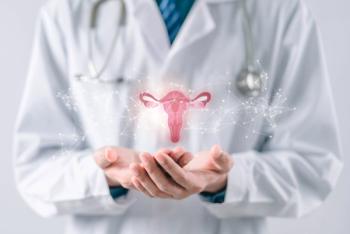
Morcellation risk and age
A look at the risk-benefit equation of power morcellation and age. Plus: Does exercise prior to pregnancy reduce pelvic pain in pregnancy? And, are hospitals doing enough to promote breastfeeding in new mothers?
Use of power morcellation for hysterectomy is controversial because of the potential for spread of undetected uterine cancer. The risk:benefit equation for the procedure may tilt based on age, according to results of a new study published in
Authored by scientists from Columbia University, the report is based on outcomes with a state transition Markov cohort simulation model of the risk and benefits of hysterectomy in women presumed to have benign gynecologic disease. The model took into consideration perioperative morbidity, mortality, risk of cancer and dissemination, and outcomes in women with an underlying malignancy. The data used came from the Surveillance, Epidemiology, and End Results (SEER) database and from the literature.
The researchers compared the risks and benefits of abdominal, laparoscopic, and laparoscopic hysterectomy with electric power morcellation. They found that in all scenarios modeled, laparoscopic hysterectomy without morcellation was the most beneficial strategy. Laparoscopic procedures with morcellation were associated with 80.83 more intraoperative complications, 199.64 fewer perioperative complications, and 241.80 fewer readmissions than abdominal hysterectomy per 10,000 women.
Excess cases of disseminated cancer per 10,000 women with morcellation compared with abdominal hysterectomy increased with age to 47.54 per 10,000 in women age 60 years and older. Compared with abdominal hysterectomy, this resulted in 0.30 (age 40–49 years), 5.07 (age 50–59 years), and 18.14 (age 60 years and older) excess deaths per 10 000 women in the respective age groups. Per 10,000 women younger than age 40, laparoscopic hysterectomy with morcellation was associated with 1.57 more cases of disseminated cancer and 0.97 fewer deaths than abdominal hysterectomy.
In women less than 50 years old, laparoscopic hysterectomy with morcellation was associated with fewer deaths than abdominal hysterectomy. The authors concluded that in older women, however, the risks of electric power morcellation may outweigh the benefits of minimally invasive hysterectomy. They were unable to stratify by variables other than age because data are lacking on characteristics of women who have undergone hysterectomy with morcellation.
Pre-pregnancy exercise may ease pain during pregnancy
Women who exercise regularly before becoming pregnant may have a lower risk of pelvic girdle pain during pregnancy, according to a new
The authors analyzed data from more than 39,000 nulliparous women with singleton pregnancies who were enrolled in the Norwegian Mother and Child Cohort study. During week 17 of their pregnancies, the women completed a questionnaire about the frequency of their pre-pregnancy exercise and the types of exercise they performed. Pelvic girdle pain-defined as combined pain in the anterior pelvis and the posterior pelvis bilaterally-was self-reported at pregnancy week 30. The final models were adjusted for pre-pregnancy body mass index, age, education, history of depression, and history of low back pain.
Of the 39,184 women in the cohort, 4069 (10.4%), reported having pelvic girdle pain during week 30 of pregnancy. A smaller percentage of women with than without the pain reported exercising 3 to 5 times per week (33% vs 37.7%). When compared to those who did not exercise, women who regularly exercised 3 to 5 times a week pre-pregnancy had a 14% lower risk of developing pelvic girdle pain during pregnancy (aRR 0.86, 95% CI 0.77 to 0.96).
Among the women with pelvic girdle pain, 8.5% did not exercise before pregnancy, 13% exercised 1 to 3 times per month, 26.3% exercised 1 to 2 times per week, and 19.2% reported exercising at least 6 times per week before pregnancy. A non-linear association was found between pre-pregnancy exercise and the risk of pelvic girdle pain (test for non-linearity, P = 0.003). In addition, high-impact exercises such as running, jogging, and netball were associated with a lower risk of pelvic girdle pain.
The investigators concluded that women who regularly exercised and did high-impact workouts before their first pregnancy were at a reduced risk of developing pelvic girdle pain compared to women who had not routinely exercised.
CDC report says hospitals need to do more to support breastfeeding
Support for breastfeeding is up among maternity hospitals in the United States but fewer than 10% of the institutions are truly baby-friendly, according to a new
The findings are from the biennial Maternity Practices in Infant Nutrition and Care (mPINC) survey, which whether maternity hospitals’ maternity care policies and practices were consistent with the World Health Organization and United Nations Children’s Fund Ten Steps to Successful Breastfeeding. Birth facilities in all 50 states, the District of Columbia, and territories were included. The data were from 2007, 2009, 2011, and 2013.
Only 26% of hospitals met the requirements for having a model breastfeeding policy (Step 1) and 74% routinely fed formula to healthy infants who were being breastfed, contrary to Step 6. Slightly less than half the hospitals allowed mothers and babies to be kept together for the entire hospital stay, which helps the women learn feeding cues and breastfeed in a safe environment (Step 7). Only 32% of hospitals provided enough support to new mothers on discharge to continue breastfeeding. Prenatal breastfeeding education (Step 3) was the only step for which adherence was lower in 2013 than in 2007.
Successes were seen in hospitals increasingly limiting the use of pacifiers (Step 9), promoting early initiation of breastfeeding (Step 4), and ensuring assessment of staff competency (Step 2). Nationally, hospitals implementing more than half of the Ten Steps increased from 28.7% in 2007 to 53.9% in 2013.
To facilitate improvements in breastfeeding practices, the CDC researchers recommended that healthcare providers: (1) help write hospital policies that support the Ten Steps; (2) counsel mothers about breastfeeding during prenatal visits; (3) include lactation care providers and other breastfeeding experts on the care team; and (4) support breastfeeding in the hospital and at well-baby visits.
Newsletter
Get the latest clinical updates, case studies, and expert commentary in obstetric and gynecologic care. Sign up now to stay informed.









